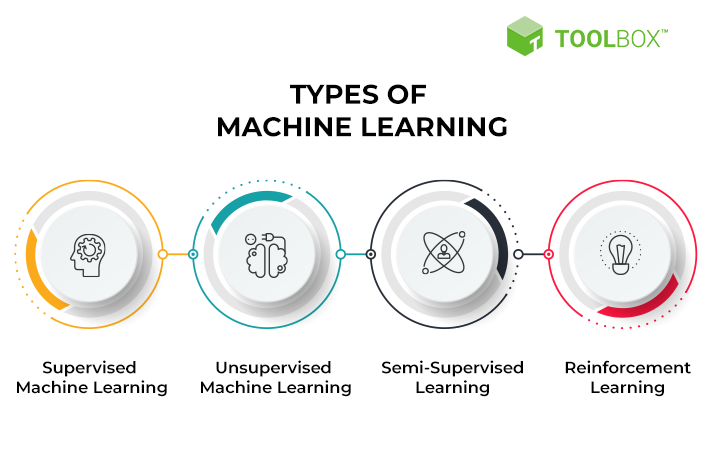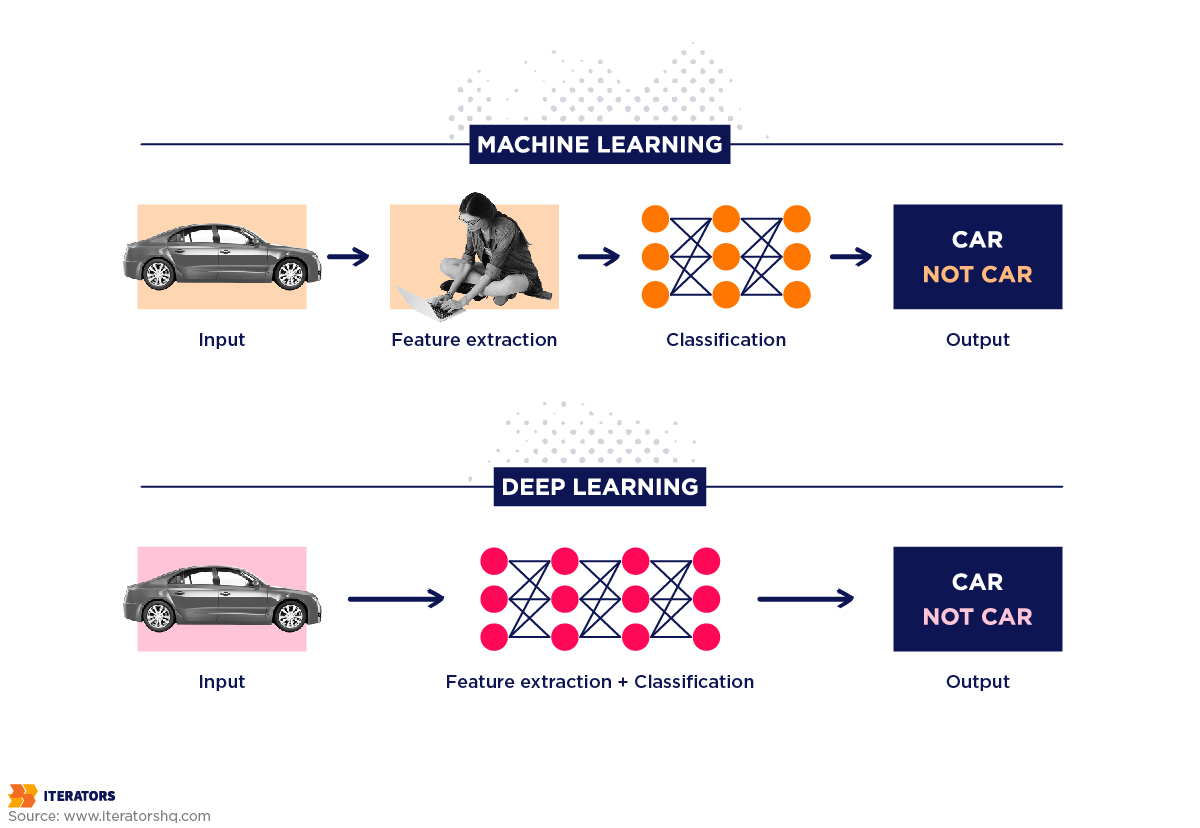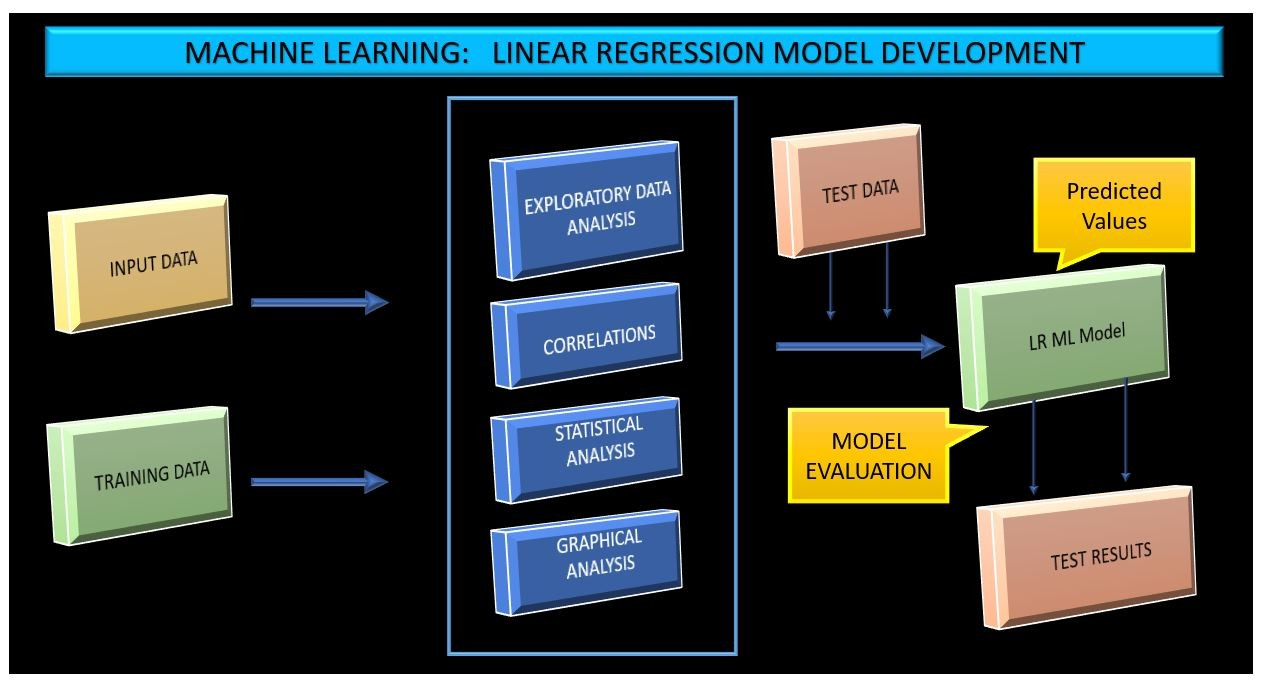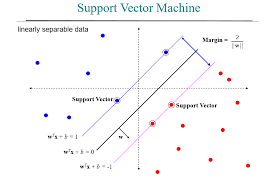Introduction
We live in a world where social media platforms shape our interests, tailor our news feeds, and provide customized content, all thanks to machine learning! With machine learning (ML), a branch of artificial intelligence (AI), software programs can predict outcomes more accurately without being explicitly instructed. Machine learning algorithms use previous data as input to forecast new output values.
It has become significant in developing new ideas and provides businesses with a picture of trends in consumer behavior and operational business patterns. A significant portion of operations in leading organizations like Facebook, Google, and Uber rely on machine learning.
Another area where this technology has become highly relevant is social media. Have you ever wondered how? The posts, advertisements, and products on your social media feed are studied and calculated by machine learning algorithms. These algorithms analyze your search data and cluster the type of content you want to watch. This analysis is not limited to your search history; even your messages, likes, and posting patterns on social media help ML algorithms study and identify patterns for the future.
Get ready to explore how this technology revolutionizes how you consume, share, and interact with content online.! We will dive deep into the role of machine learning in social media platforms and its transformative impact.

Source: Pianalytix
Table of Contents
Understanding Machine Learning in Social Media
Overview of Machine Learning Techniques

Source: Spiceworks
Machine learning allows computer systems to improve their performance through repeated learning experiences. The learning processes are categorized into three major types: supervised learning, unsupervised learning, and reinforcement learning.
Supervised Learning
This technique involves training a model with labeled data to make predictions on new, unseen data. Supervised learning algorithms include regression, classification, and support vector machines.
Unsupervised Learning
In this technique, the model works with unlabeled data and tries to identify patterns, clusters, or relationships within the data. Unsupervised learning algorithms include clustering, dimensionality reduction, and anomaly detection.
Reinforcement Learning
This technique involves training a model through trial and error by providing it with rewards or penalties based on its actions. The model learns to make the best decisions in a given environment to maximize its cumulative reward.
There is another relatively nascent subset of machine learning that is widely used for more complex models called deep learning.
It utilizes artificial neural networks with multiple hidden layers, allowing the model to learn complex patterns from vast amounts of data. Deep learning incorporates convolutional neural networks (CNNs) for image recognition and recurrent neural networks (RNNs) for sequence analysis.

Source: Iterators
How can Machine Learning Improve Social Media Platforms?
It’s no secret that social media has emerged as a brand-new area for commercial operations. Take a moment to look at these astounding numbers, suggesting the vitality of social media platforms in shaping people’s lives. There are 1.65 billion social media users, over 96% of firms use social media, and 71% of consumers with positive social media experiences are inclined to recommend the same to others. It may not be extensively apparent; however, machine learning has a significant role here.
With the help of machine learning, social media platforms can provide a better user experience, use data to forecast future states, and predict more accurate results. Below are a few ways machine learning can improve social media platforms.

Source: Mentionlytics
Improves Potential Customers’ Visual Experience
Customer experience is the holy grail for a product’s performance. Social media platforms deploy machine learning models to identify and predict the most relevant content for each user, provide better recommendations, reduce junk emails, and add very little to their inbox spam. Moreover, they use AI and ML to determine the most captivating visual effects for viewers.
According to data, 82% of Twitter users view videos, and 90% do it on a handheld device. As a result, Twitter bought Magic Pony Technology, a technology company with offices in London that has created machine learning methods for visual augmentation to enhance the visual experience further.

Source: freepik
Enables Social Networking Giants to Promote their Goods to the Target Audience
Machine Learning enables social networking giants to promote their goods to niche audiences by analyzing user data such as demographics, interests, and preferences. This data is then used to create targeted ads that are shown to specific groups of users, increasing the chances that they will be interested in the promoted goods.ML algorithms can also analyze user behavior and predict which products or services they are most likely to be interested in, allowing for even more precise targeting.
For instance, Facebook uses deep neural networks to determine which advertisements should be shown to which people. This frees skilled professionals from labor-intensive tasks by letting the machines do them.

Source: buck
Protects the Data and the Reputation
Machine learning algorithms can help protect social media platforms by detecting and flagging potentially harmful or inappropriate content before it spreads. This not only helps prevent the spread of harmful content but also helps maintain the platform’s reputation by promoting a safe and welcoming online community.
Additionally, machine learning can be used to identify and prevent unethical activities on social media by analyzing historical hacking malicious attacks, further protecting user data and the platform’s integrity.
Pinterest uses machine learning to ensure data security. With ML, the business can identify spam users and content, promote the content, and gauge the possibility that a user will pin it.

Source: primex manufacturing
Facilitates Data Automation
Machine Learning facilitates data automation for social media platforms by using algorithms to analyze a large amount of data and identify patterns and insights. This can help social media platforms automate content recommendation, moderation, and ad targeting tasks. By automating these tasks, the platforms can improve the user experience and increase engagement while also maximizing their revenue potential.
Google has adopted a suite of machine-learning techniques for automatic tagging without the need for further data input. It is to distinguish abstract ideas (like sunsets and beaches) and automatically attach metadata to them.

Source: novateus
Examples of Machine Learning Algorithms Used in Social Media
Machine learning algorithms have become an integral part of social media platforms, enabling them to analyze vast amounts of user-generated data and make informed decisions. Some of the commonly used ML algorithms are:
Natural Language Processing (NLP)
NLP aids in understanding and interpreting human language patterns. Social media companies utilize NLP to analyze text data, including tweets, comments, and posts, to extract sentiment, categorize content, or identify trends.
Platforms like Twitter and Facebook analyze the content of posts, identify trends, and offer personalized advertisements based on user preferences. For instance, Twitter employs NLP to filter out spam content and prioritize relevant tweets for users.

Source: Nexocode
Linear Regression
Linear regression uses statistical models to establish relationships between variables. In social media, it can be applied in scenarios like predicting user engagement based on post features or optimizing advertising strategies by analyzing click-through rates or cost per click.
This algorithm helps companies like LinkedIn predict user engagement probability with various content offerings. By analyzing factors such as user activity, historical engagement patterns, and connections within a network, linear regression allows LinkedIn to present highly personalized content feeds for its users.

Source: LinkedIn
Support Vector Machines (SVM)
SVM is a robust machine learning algorithm for classification tasks. These algorithms are beneficial for distinguishing between categories or sorting content into groups. In social media applications, SVMs can be utilized to filter spam messages or analyze user behavior patterns to detect fraudulent activities. With SVM algorithms, social media platforms can also sort content into categories or clusters based on visual aesthetics or similarity to other images.
Instagram employs SVM algorithms in their Explore tab to recommend pictures that users may find attractive or visually appealing based on their browsing history and preferences.

Source: Hecettepe Edu
Overall, machine learning algorithms like NLP, Linear Regression, and SVM continue transforming how social media platforms analyze and process their vast quantities of data, ultimately leading to more tailored and efficient user experiences.
Benefits of Machine Learning in Social Media
Now that you know how widespread is the use of machine learning in social media platforms, let’s move on to see how the technology actually benefits them.
Improved Search Algorithms
Machine learning algorithms enable social media platforms to provide more relevant search results to users. They can identify and prompt a word in the search keyword that does not look right and suggest corrections. With each search, the algorithm learns, implying that it gets better every time. This helps users find the content they are looking for quickly and efficiently, resulting in a better experience and higher satisfaction rates.
Efficient Spam Filtering and Moderation
Machine learning algorithms can help social media platforms detect and filter spam more efficiently. Algorithms like Decision Trees cluster content that is often flagged as spam and prevent it from surfacing on the users’ social media profiles. This helps the platforms moderate content based on the user’s preferences, resulting in a cleaner, safer, and more trustworthy environment for users to engage with each other.
Enhanced User Experience and Engagement
Machine learning algorithms can analyze user behavior to provide personalized notifications, recommendations, and content. They can streamline the type of posts that most users engage with. For instance, they can shortlist shopping experiences based on user data and accordingly allow advertisements to appear on their feed.
Real-time Data Analysis for Better Decision-making
Machine learning algorithms can analyze vast amounts of data in real-time to provide valuable insights and help social media platforms to strategize better. As these platforms also need to work on their algorithms to rank content based on user engagement, the insights provided by machine learning help them tailor their platform algorithms. For example, Instagram, Snapchat, Facebook, etc., have platform algorithms devised based on user data and insights.
Applications of Machine Learning in Social Media

Source: SlideTeam
Image and Speech Recognition for Better Content Moderation
Machine learning helps social media platforms analyze images and speech patterns to automatically detect and flag inappropriate content, thereby ensuring a safe online environment for users. Convolutional Neural Networks (CNN), Viterbi search, and Deep Neural Networks (DNNs) are examples of machine learning algorithms that can be used to analyze images and speech patterns.
Yelp, an online reviews website, heavily relies on machine learning to sort through millions of social media data points and categorizes them as food, menus, or outside photos.
Sentiment Analysis for Understanding User Emotions and Feedback
Machine learning algorithms can analyze text data from social media posts to determine user sentiments. This allows companies to gauge public opinion and better understand their customers’ needs. To test the precision of predicting sentiment scores, researchers use several machine learning algorithms, including Support Vector Machines (SVM), Multilayer Perceptron Neural Networks (MLP Neural Nets), Naive Bayes (NB), and Decision Tree (DT) algorithms.

Source: Data camp
Predictive Analytics for Targeted Advertising
Machine learning can predict consumer preferences and offer personalized advertisements by analyzing user behavior patterns, leading to higher click-through rates and increased sales. K-means clustering is a popular machine-learning technique that can be used to analyze user behavior for targeted advertising.
Natural Language Processing for Personalized Customer Support
Through natural language processing, machine learning can help social media platforms understand user inquiries and provide tailored support, creating a more efficient customer service experience. Support Vector Machines, Maximum Entropy, and Bayesian Networks are the most popular supervised NLP machine learning algorithms.
Chatbots for Automated Customer Service
Machine learning-powered chatbots can handle common customer queries on social media, reducing response times and freeing up human support staff to focus on more complex issues. Support vector Machine, Natural language processing (NLP), and Recurrent neural networks (RNN) are some of the most popular machine learning algorithms for chatbots.

Source: Nimble Works
Challenges and Limitations of Machine Learning in Social Media
Biases and Ethical Concerns
Ethics is one of the main concerns with machine learning. Trusting and depending on machine learning algorithms for automation, analysis, and decision-making is beneficial. Yet, there are certain difficulties because these algorithms may be biased in their development, especially given that they are trained on input data. If the input data is corrupted or unethical, the machine learning model can give terrible results.
Data Privacy and Security Issues
With the development of social media and machine learning, data breaches and security issues have also increased. Machine learning in social media platforms is based on large amounts of data. This data is typically private and user confidential. This data, if leaked, can compromise user information to a large extent.
Need for Skilled Professionals in Machine Learning
Applying machine learning in social media analysis requires highly skilled professionals and data scientists who can create, develop, and maintain machine learning models. This is because developing successful models involves an advanced understanding of algorithms, data processing techniques, and coding languages. The need for such professionals may pose a challenge to utilizing machine learning in social media analysis fully.
High Cost of Implementing Machine Learning Technologies
Implementing machine learning solutions in social media platforms can involve significant financial investment. These costs generally cover data storage services, infrastructure development, hiring a skilled workforce, regular system updates, and maintenance expenses. For some businesses, these high costs deter effectively adopting and utilizing the potential benefits of machine learning technologies in social media analysis.
Future of Machine Learning in Social Media
As it has in the last ten years, social media’s future is filled with pivotal moments, like the onset of machine learning in improving these platforms. In the coming years, the future of machine learning in social media is poised for significant growth and advancement. You will witness an increased integration of AI-powered chatbots and personalized content feeds to cater to individual preferences, enhancing user engagement.
Moreover, ML has enabled geolocation targeting and collecting accurate data on population density. This data is then utilized for safety and health measures in emergent situations. In 2016, the practice covered only 22 regions; however, it now provides worldwide coverage! Facebook is one such social media platform that actively contributes to this cause.
Last, ML and AI have offered numerous tools that take over redundant human tasks and provide insights that none of us could have imagined. These tools assist in everything, from content creation (for example, ChatGPT, Flick, Contentbot.ai, etc.), to content analysis (for example, Lately, Socialbakers, etc.). They have revolutionized the way content works and is consumed by the people.
Further, down the line, social media will also be integrated with other technologies like augmented reality, virtual reality, and blockchain to enhance social media experiences. Just like Snapchat was the first social media company to incorporate AR-based filters, effects, and creator profiles, many other platforms are to follow these trends. This integration will enable more competent virtual assistants, immersive content, and even new mechanisms for tracking engagement and verifying user identities.
Conclusion
In essence, social media operates on websites and applications encouraging users to produce and distribute content to participate in the social system. Today, machine learning plays a significant role in social media platforms, as it helps in content personalization, user experience improvement, targeted advertising, and moderation of online communities. The continued research and development in this field are crucial to drive the evolution of social media and enhancing its capabilities.
As machine learning advances, the understanding of user behavior and preferences will become more refined, resulting in more engaging and relevant content for users. In the future, machine learning has the potential to revolutionize social media and many other industries by enabling advanced forms of communication, interaction, and content discovery that can foster a more connected and informed society.
To learn more about machine learning and other related technology like artificial intelligence and data science, head over to Analytics Vidhya (AV). AV is an excellent educational platform and a one-stop destination for all ML, AI, and Data Science related learning resources and career guidance. They offer engaging blogs, courses, and a community of experts to train you for a tech-focused future.
Frequently Asked Questions
Q1. How does ML work in social media?
A. Social media platforms use ML to analyze likes, comments, messages, images, videos, and audio. The algorithms then identify certain features and classify them into “clusters.” Using this information, the platforms decide the content to be shown to a particular user.
Q2. What is the role of ML and AI in social media marketing?
A. ML and AI help marketers create more personalized social media campaigns in a fraction of the time taken by a human. For example, Heinz, a global producer of ketchup, pickles, and vinegar, created an ad campaign with DALL-E 2, showcasing “ketchup in outer space!”
Additionally, these technologies allow companies to extract deeper insights from user data and activity helping them to achieve better marketing ROI.




